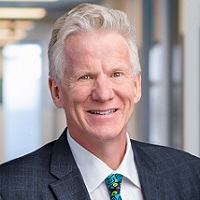 By Nick van Terheyden aka Dr Nick, Principal, ECG Management Consulting
By Nick van Terheyden aka Dr Nick, Principal, ECG Management Consulting
Twitter: @drnic1
Host of Healthcare Upside Down – #HCupsidedown
For much of my early life, I grew up in a single-payer healthcare system that provided everything I needed throughout childhood and into my early adult life. I also trained to be a physician, and worked in, a single-payer system.
So it was jarring when I went to work in Australia and was expected to end all of my consultations by asking, “How would you like to pay—cash, check, or bank card?” This was something I struggled with; I’d never dealt with the financial side of medicine, focusing instead on my patients and what they required.
Episode NOW on Demand
In the US, money plays an outsized role in driving care delivery. This is especially true in primary care, which has seen a steady decline in payments to PCPs. To maintain their income, these groups have had to take on a higher workload, leaving less time for individual patient consultations. The average amount of time a doctor can spend with a patient in the primary care setting has fallen to less than 15 minutes, and in many cases is as low as 5 to 7 minutes—an unsatisfying experience for both the patient and the physician.
Zak Holdsworth, CEO of Hint Health, is trying to change that. Membership-based primary care models have provoked debate about accessibility, equity, and sustainability. On this episode, Zak argues that not only is direct primary care economically feasible, it can help restore the spirit of medicine. Here are a few excerpts.
Rejuvenating the PCP-patient relationship.
“I think it’s possible. It’s very difficult, or maybe impossible, to do it within the construct of traditional healthcare payment models. A lot of the innovation we’ve seen in healthcare is built on top of legacy infrastructure. And it’s really hard to restore the integrity of that patient-physician relationship if you’re sitting on top of decades of legacy.”
Direct primary care as a new foundation.
“There’s no functioning healthcare system in the world without a functioning primary care system. So our core thesis is to rebuild the system outside the insurance service chassis, completely from scratch. We really need to restore the integrity of primary care, so we have built a company that’s supporting the growth and success of innovative models, like direct primary care, that are achieving the Quadruple Aim that everyone wants to achieve, but outside the status quo infrastructure. The vision is long term—once you’ve fixed primary care, you can slowly but surely carve more and more of the system out of the legacy infrastructure, and put in a net new kind of ecosystem that’s thriving.”
Dispelling fears of overutilization.
Physicians going into these models often fear, ‘What’s going to happen with the overutilizers and the hypochondriacs? We’re going get flooded by them.’ The short version—that doesn’t typically happen. What actually happens is that if there are overutilizers, often there’s an underlying mental health problem that will have serious implications downstream if not dealt with. So if you’ve got people that are overutilizers, they’re the people you probably want to spend a lot of time with so that you can address those root-cause problems. And what we find is that once overutilizers realize they can get access anytime, that they have that relationship with their doctor, often that falls away. Once those issues have been dealt with, people don’t want to spend all their time with their doctors.
The point is that you have the ability to spend 45 minutes with your doctor, and most patients don’t want to spend that much time, but if they do, that’s really amazing. You restore the spirit of medicine, and you allow that relationship to form. And that to me is profound. What is really missing from healthcare today is that deep connection.
About the Show
The US spends more on healthcare per capita than any other country on the planet. So why don’t we have superior outcomes? Why haven’t the principles of capitalism prevailed? And why do American consumers have so much trouble accessing and paying for healthcare? Dive into these and other issues on Healthcare Upside/Down with ECG principal Dr. Nick van Terheyden and guest panelists as they discuss the upsides and downsides of healthcare in the US, and how to make the system work for everyone.
This article was originally published on the ECG Management Consulting blog and is republished here with permission.
